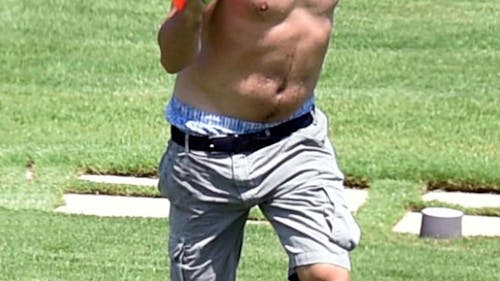Standards set by 'dad bods' complicate our view of aging women

Since I was a teenager, getting ready for a date has taken me a few hours. Smooth skin, blowing out my hair, makeup, picking the right outfit to flatter my body best — it’s a process. But for the dates looking back at me, they couldn't have taken more than 30 minutes.
Beauty standards aren't fair, and we don’t need a survey to tell us this. Still, one of the biggest shocks to me is the discrepancy between female and male body standards.
While women are held up to body standards that typically can only be attained by surgery, exercise and a strict diet, for men, having a dad bod — a normal and undefined figure — is not only accepted, but also celebrated.
An article in SHAPE explained this inequality perfectly when reiterating the fact that “mom bods” are still not a thing despite the nearly universal love for dad bods.
In fact, just take a look at celebrities to see this inequality play out. "Leonardo DiCaprio, Jason Segel and Jon Hamm are praised for their ability to be comfortable with a softer, less muscular look, and they're certainly not having trouble finding work in Hollywood,” according to the article.
On one hand, this might position the dad bod as transgressive and positive. But on the other hand, could it be just another sign of misogyny at play in society?
It’s great that most men can be accepted for looking normal, we just wish the same could be said for women.
Beyoncé, Rihanna and Demi Lovato are among the many women who have been fat-shamed for having a normal body that fluctuates in size. In fact, these women are nowhere near fat and have incredible bodies that many women would love to have. Still, their bodies are deemed as imperfect.
The sad truth is that historically, and currently, we expect different things from men and women. Women weren’t even allowed to vote a century ago, and since then, their place in society has been largely tied to marital status, motherhood, beauty and sex.
Men, on the contrary, are expected to provide, show little emotion and be as tough as rocks. In this way, there is far less emphasis placed on the physical appearance of men because most of the societal expectations of men lie in their character.
Furthermore, the aesthetic of the dad bod emphasizes the character of men that their mates find attractive.
“Women thought men with dad bods make better 'marriage material,'" according to a survey conducted by Planet Fitness.
The extra fluff and softness around the edges make women feel safe and in turn conclude they would be a better partner. For women, softness around the edges results in one thing: discrimination.
It feels almost cruel, or like a mockery, to women. Body disorders and body dysmorphia are almost normalized for women at this point. Alongside those disorders comes the exponential rise in cosmetic surgeries and the immense pressure to stay young and youthful-looking.
Men are seen as sexier and wiser, the older they are. Women lose their sexuality and with that, a lot of autonomy.
It’s not bad that dad bods should be outliers in society’s beauty standards. We don’t wish celebrities like DiCaprio were fat-shamed. We just wish it was a level playing field.
Beauty standards are more inclusive than ever for women with body-positive accounts and influencers posting images of stomach rolls and cellulite in efforts to destigmatize these “imperfections.”
Still, we wonder if misogyny will ever give the mom bod, or better, the normal woman’s body, the same love it grants to the dad bod.



